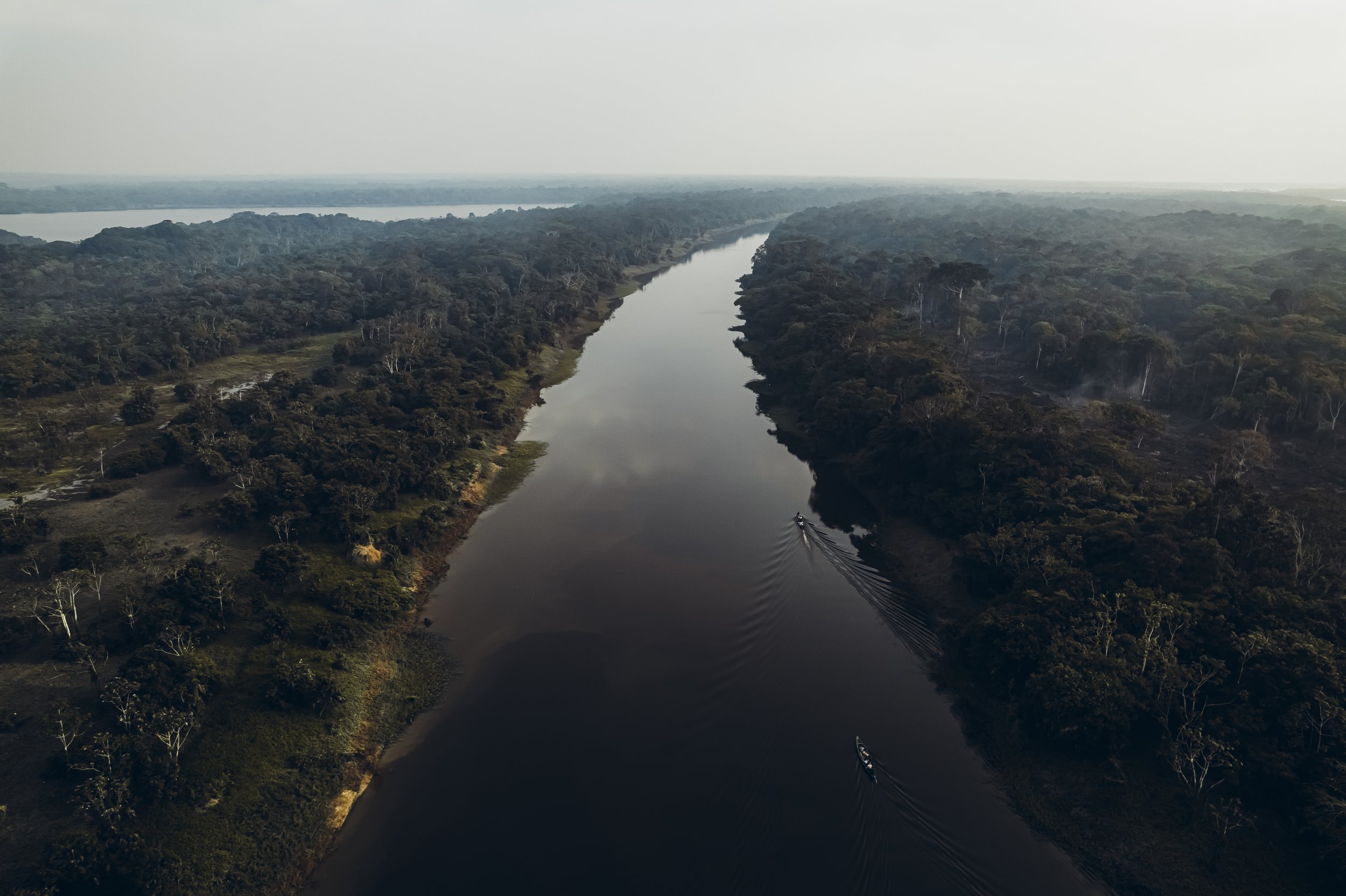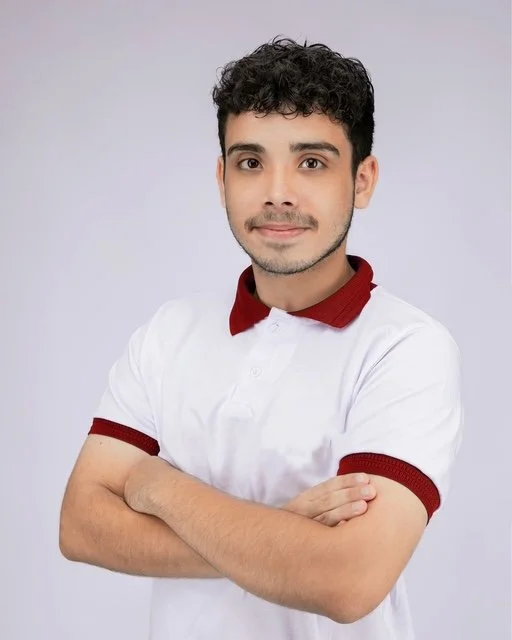The Invisible Neurotoxic Storm: Geopolitical Pressures in the Amazon
..And their Devastating Impact on Child Neurodevelopment
A river that flows into the Amazon.
By Luiz Arthur de Oliveira Nantes, M.S.
Abstract
The Amazon Basin, a region of immense biodiversity and geopolitical significance, is currently the epicenter of a silent yet devastating public health crisis. Economic and political pressures, primarily from illegal mining and agricultural expansion, are leading to unprecedented environmental contamination. This article argues that these geopolitical challenges are directly linked to a surge in neurodevelopmental dysfunctions among the region's most vulnerable populations, particularly children. By examining the pathway from mercury contamination to the developing brain, this piece highlights a critical intersection of environmental science, global health, and human rights, calling for an integrated approach to protect both the Amazonian ecosystem and the neurological future of its inhabitants.
Introduction
As a third-year medical student at the State University of Pará, my education extends far beyond textbooks and lecture halls. It unfolds in the neurology clinics of our university hospital, where a quiet but devastating epidemic is making its presence known. Here, the abstract concept of environmental contamination takes human form. I see children from remote riverside communities who struggle to meet developmental milestones, whose parents have traveled for days seeking answers for conditions that defy easy explanation. These young patients are the living evidence of a crisis fueled by neurotoxins silently pervading the Amazonian food chain. While the complex web of geopolitical and economic forces driving this contamination may seem overwhelming, the most powerful response can begin right here. As a leading academic institution situated at the heart of the Amazon, the State University of Pará has a profound responsibility and a unique capacity to transform clinical observation into strategic, evidence-based action.
A Clinical Portrait: The Human Cost of a Contaminated Ecosystem
The human cost of this environmental degradation is a daily reality within our clinics. I assist supervising physicians as they evaluate children with a troubling spectrum of neurological impairments. Some present with hypotonia and poor motor control, unable to hold their heads up or grasp objects, while others exhibit hypertonicity and spastic movements that mirror the symptoms of cerebral palsy. Parents, often with limited formal education but an intimate knowledge of their child's suffering, describe profound developmental delays, seizures, or an inability to communicate. Their stories paint a consistent picture: a life lived by the river, a diet rich in local fish, and a growing sense of fear as their child falls further behind.
“THE CHILDREN IN OUR CLINICS ARE SENDING A CLEAR MESSAGE: THE AMAZON IS SUFFERING, AND ITS PEOPLE ARE PAYING THE HIGHEST PRICE. ADDRESSING THIS CRISIS OF NEURODEVELOPMENTAL DISORDERS IS ONE OF THE MOST URGENT PUBLIC HEALTH CHALLENGES OF OUR TIME. ”
The diagnostic process in this context is fraught with challenges. For our attending physicians, the task is to differentiate these presentations from genetic syndromes, birth-related injuries, or infectious diseases, often with limited diagnostic technology. The high prevalence of these cases from specific geographic areas, however, strongly suggests a common environmental etiology. The care we can provide often feels insufficient. We connect families to physical and occupational therapy, but the waiting lists are long and the services are concentrated in urban centers, far from their homes. We offer counseling, but we cannot offer a cure. This experience is a formative part of my medical training, teaching me that a patient's health is inextricably linked to the health of their environment. It forces a critical understanding that true healing requires more than just clinical treatment; it requires addressing the root causes of disease.
The University’s Mandate: Transforming Observation into a Strategic Response
Faced with this clinical reality, our role as an academic institution cannot be one of passive observation. The State University of Pará must leverage its intellectual resources and its strategic location to spearhead a comprehensive response. This begins with a commitment to rigorous scientific inquiry. I propose the creation of a multidisciplinary research initiative, uniting experts from our neurology, pediatrics, public health, and environmental science departments. The primary goal would be to systematically map the prevalence of neurodevelopmental disorders in at-risk riverside communities and correlate it with environmental exposure data. This would involve collecting biological samples, such as hair and blood, to test for mercury levels, while simultaneously using validated screening tools to assess child development. This robust dataset would be indispensable, providing the undeniable evidence required to advocate for protective public policies and to hold both government and industry accountable.
“WE CAN FORMALIZE AND EXPAND STUDENT-LED OUTREACH BRIGADES, ALLOWING MEDICAL, NURSING, AND PUBLIC HEALTH STUDENTS TO TRAVEL TO THESE ISOLATED COMMUNITIES UNDER FACULTY SUPERVISION.”
Parallel to this research, we must translate knowledge into direct action through community engagement. We can formalize and expand student-led outreach brigades, allowing medical, nursing, and public health students to travel to these isolated communities under faculty supervision. These brigades would serve a dual purpose. First, they would provide vital services: conducting developmental screenings, educating families on the specific types of predatory fish that carry the highest neurotoxin loads, and offering guidance on safer nutritional alternatives. Second, they would provide an unparalleled educational experience, immersing the next generation of healthcare professionals in the socio-environmental realities of the Amazon. This initiative would build trust, empower communities with knowledge, and ensure that our academic work is directly accountable to the people it is meant to serve.
Conclusion: Laying a Foundation of Evidence for a Healthier Future
The children in our clinics are sending a clear message: the Amazon is suffering, and its people are paying the highest price. Addressing this crisis of neurodevelopmental disorders is one of the most urgent public health challenges of our time. While the ultimate solutions will indeed require tackling the vast geopolitical and economic systems that drive illegal mining and deforestation, that formidable journey must begin with a first, decisive step. The State University of Pará is poised to take that step.
By systematically investigating the scope of the problem and actively engaging with the communities most affected, we can build an unshakeable foundation of scientific evidence. This locally-driven, evidence-based approach is our most powerful tool to catalyze broader change and advocate for the health of both the ecosystem and its inhabitants. It is our moral imperative to act, not only as scientists and clinicians, but as guardians of the next generation's right to a healthy future.
About the Author
Luiz Arthur de Oliveira Nantes, M.S. is a 22-year-old medical student at the State University of Pará (UEPA), located in the Brazilian Amazon. With a profound interest in Neurology, his medical training has been deeply shaped by observing the complex interplay between environmental health, human rights, and neurological outcomes in vulnerable Amazonian communities. This commitment to social impact extends far beyond the classroom. He actively championed the rights of children and adolescents, having served as the State Coordinator for Pará in UNICEF Brazil's #tmjUNICEF Digital Volunteering Program (2023-2024). Demonstrating leadership within his academic community, he also served as the Vice-President of the José Arrais Academic Center of Medicine (2024-2025). Through these roles, Arthur has integrated his passion for medicine with hands-on advocacy, striving to build a more equitable future by addressing the health challenges deeply embedded in the Amazonian reality.


